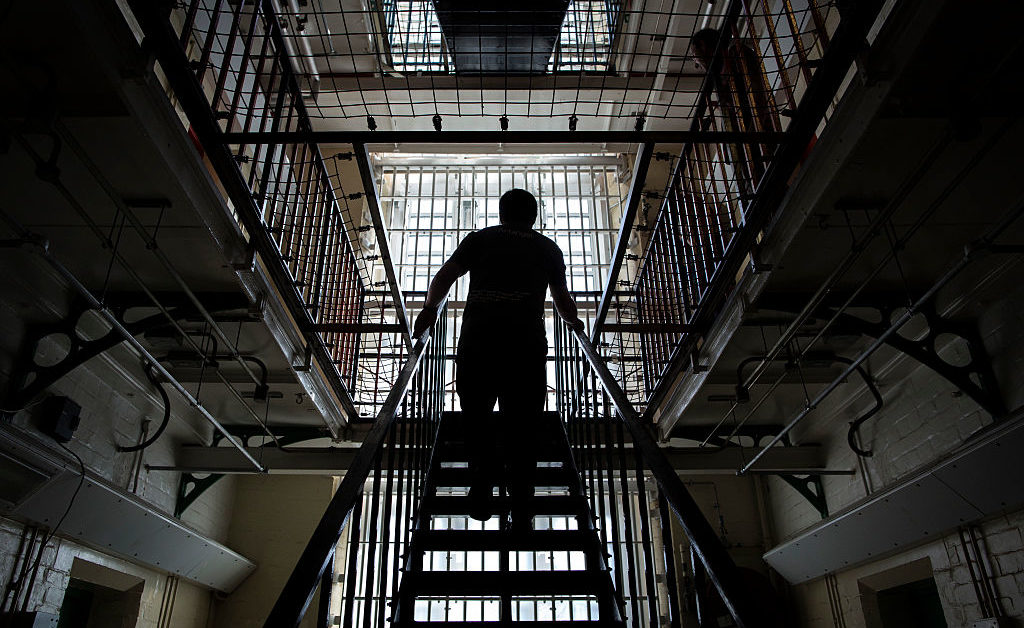We continue our series of articles that explore the racial health disparities exposed by COVID-19. In this interview, we examine the issue of incarceration as a public health concern in the United States, as well as the toll it takes on black communities, especially in the context of the pandemic.

According to some of the most recent data, black Americans are 2.4 times more likely to die of COVID-19 than their white counterparts, and 2.2 times as likely as Asian Americans and Latin Americans. Other studies have also suggested that black communities, followed by Latinx communities, are being hit the hardest by the pandemic.
Through a series of Special Features and interviews, Medical News Today have been trying to untangle some of the mechanisms behind these racial disparities.
In our previous interview on COVID-19 race-related health inequalities, Prof. Tiffany Green quoted the work of John Eason, Ph.D., associate professor in the department of sociology at the University of Wisconsin-Madison — to point out one such potential mechanism.
Prof. Eason’s ongoing research shows that black and Latinx people are overrepresented as corrections officers in county jails and suggests that these workers may be inadvertently spreading the new coronavirus.
In this interview, MNT has followed up on this issue by speaking to Prof. Eason himself about his research.
Prof. Eason’s expertise focuses on imprisonment, healthcare access, and health disparities across the rural-urban continuum. He is also the director of the University of Wisconsin-Madison Justice Lab.
We have lightly edited the interview transcript for clarity.
MNT: Can you tell us about the role that incarceration plays in the uneven effect that COVID-19 is having on black and Latinx communities? Your research suggests that a disproportionate number of corrections officers may inadvertently serve as SARS-CoV-2 vectors in these communities, could you kindly expand on that?
Prof. Eason: We’ve paid a lot of attention to the disproportionate rate of incarceration for black and Latinx people in the U.S. — it’s more so for black people. So, while over 60% of Americans know someone or have a family member in prison, it’s more like 90% for African Americans, so the scale of mass incarceration is unprecedented.
What’s also quite unprecedented in the U.S. compared to any other country is prison building, or what I’ve labeled as the “prison boom,” where we built over 1,100 prisons […] in about 35 years, and we’ve expanded the footprint [of these facilities].
Just the landmass is more than 600 square miles in terms of the number of prisons and how big they are.
In that expansion, we’ve grown to now 450,000 corrections officers, and in the last major study done on this, we saw black folks, more than Latinx, being overrepresented in the corrections officers […] labor force. Black folks were nearly double, 22 or 23% of corrections officers were black while only 11% were Latinx.
There’s also a lot of conjecture and a lack of understanding about the empirical reality of where prisons are built.
My research has shown that while we think that these are overwhelmingly white towns, the average town that gets a prison has a higher percentage of black and Latinx people in it, and that’s accounting for whether or not it already has a prison (so I’m not counting the population of prisoners in predicting that).
[S]o this goes back to the heart of your question about the transmission of COVID between communities and prisons. If black and brown people — black people, especially — are over-represented in corrections officers, and most prisons are built in rural communities that have a higher number of black folks, the workers — not the incarcerated people — [could spread the virus.]
The incarcerated people come from anywhere across the state, as most prisons are built by states. Another source of confusion is the belief that most prisons are privately owned, but roughly only 12–13% […] are privately owned; the vast majority of them are owned by state operators.
So, Texas, Georgia, and Florida have built the most prisons; and in those places, in rural black communities, you have workers who are disproportionately black coming and going out of these facilities.
And because they’re essential employees […] who are disproportionately black and Latinx […] they’re serving as vectors for transmission of the disease, more so than prisoners.
Because in prisons, we haven’t decarcerated a whole lot of people under COVID. We’ve done more so through jails, which is a different system. In the U.S., about 1.6 million people are in prison, and about another 600,000 are in local jails, and most of the decarceration under COVID has occurred in [local county] jails.
Prison guards [may spread the virus] in particular. I formed a team of researchers, and we’re running analyses to see if this hypothesis holds true and if it will hold during the whole COVID crisis.
But places with prisons — I’ve already done the analysis on this — counties with prisons have higher rates of COVID than counties that don’t [have prisons].
So that’s the baseline descriptive, and now we have to look to see the number of cases per facility and worker.
MNT: Do the type of employment contracts that these workers work under play a role as well?
Prof. John Eason: I think they would […] In a lot of states you have unionized corrections officers; and even if they’re not unionized, the level of pay for a corrections officer is going to be better compared to other jobs in the state. So, in a state like Arkansas, […] the pay for a corrections officer is going to be pretty good compared to most other salaries.
So, you may see variat

